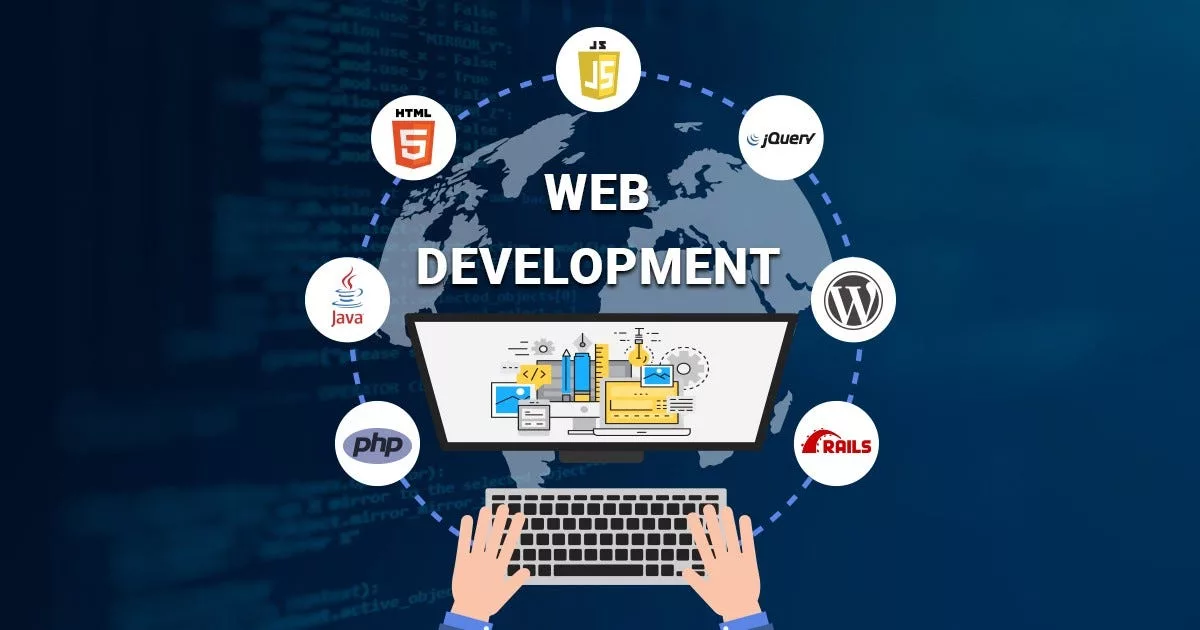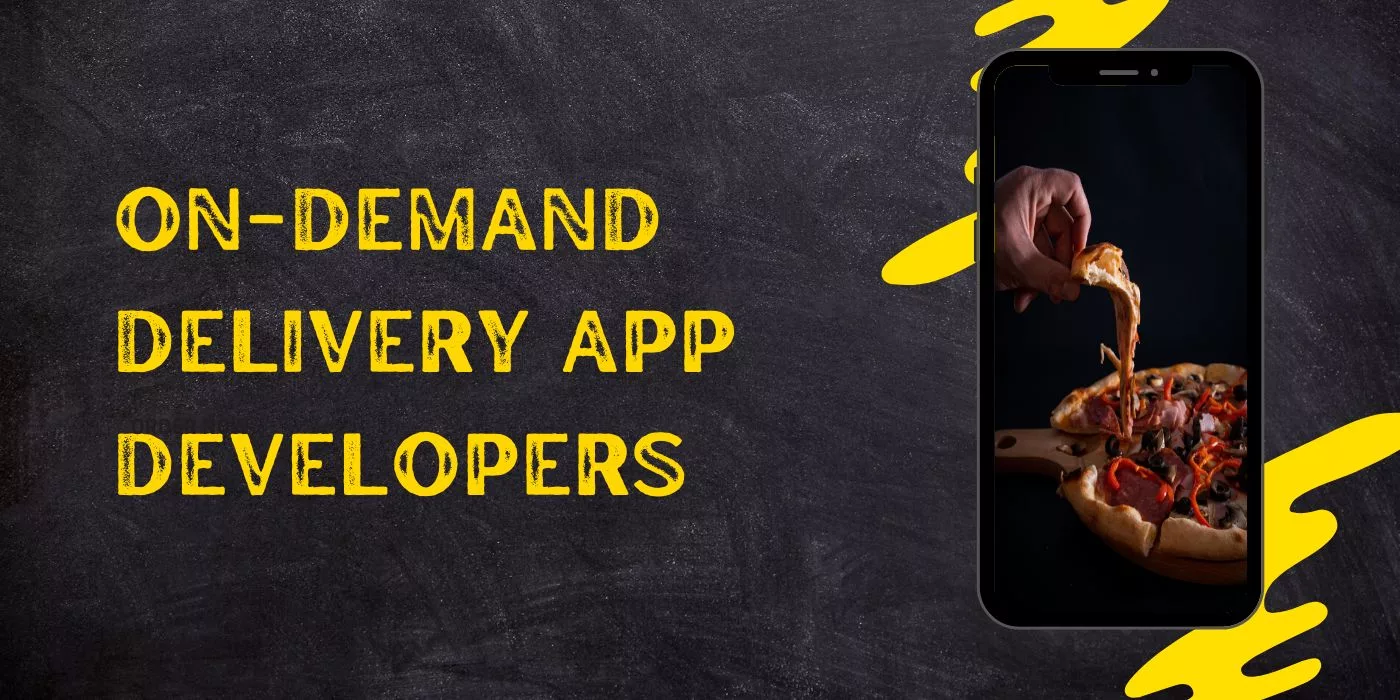The health and fitness industry has always been at the forefront of innovation and transformation, adapting to changing consumer needs and technological advancements. In recent years, this sector has seen an unprecedented evolution, largely propelled by global events that have reshaped how individuals approach personal wellness, exercise, and nutrition. The demand for personalized, accessible, and efficient health and fitness solutions has never been higher, driving the industry towards more sophisticated, user-friendly, and integrated offerings.

2025 stands as a pivotal year, marking a new era of health consciousness and technological integration. This year, we’re witnessing a blend of emerging trends that promise to redefine the boundaries of health and fitness. From virtual reality workouts to AI-driven nutrition apps, the industry is leveraging technology to create more engaging, effective, and personalized experiences for users worldwide. Additionally, there’s a growing emphasis on mental health and well-being, reflecting a holistic approach to health that considers both the physical and psychological aspects of fitness.
As we delve into the top 40 health and fitness industry trends and statistics for 2025, it’s clear that the sector is experiencing a renaissance, fueled by innovation, consumer demand, and a shift towards more sustainable and ethical practices. This article aims to explore these trends in detail, offering insights into the future of health and fitness and how these developments are shaping the way we live, work, and play.
Fitness Market Stats 2025 & Beyond
Here are recent statistics and future projections for the fitness industry:
- The global fitness market is projected to reach $434.74 billion by 2028, reflecting a significant shift in how individuals approach health and exercise.
- Virtual Fitness Market Expected to Surpass US$ 187.8 Billion by 2032, Growing at a CAGR of 31.2%.
- The total market size of the US fitness industry was valued at $40.6 billion in 2023, representing a 5.1% decrease compared to 2022.
- The fitness industry is growing at a rate of approximately 8.7% per year, with global club memberships projected to reach 230 million by 2030.
- The wearable devices market is already worth over $178.72 billion worldwide in 2025, projected to rise to over $572 billion by 2033.
- The global virtual fitness market is expected to reach $59.23 billion by 2027, growing at a CAGR of 33.1% from 2020.
- The U.S. home fitness equipment market size was valued at USD 4.81 billion in 2022. The market is projected to grow from USD 5.09 billion in 2023 to USD 8.50 billion by 2030, exhibiting a CAGR of 7.59% during the forecast period.
- In 2025, an estimated 119 million Americans were using eServices fitness apps.
- In 2025, apps in the eServices fitness market are forecasted to generate revenues for almost 1.8 million U.S. dollars in the United States alone.
- The HFA Global Report reveals that 86.8% of club and studio operators expect membership growth in 2025, with more than two-thirds anticipating increases of over 5%.
- 92.6% of fitness operators project revenue growth, reflecting a strong and expanding market.
- With a $156 billion market capitalization in 2023, Nike is the leading sportswear company in the US, followed by Dick’s Sporting Goods with a $9.5 billion market capitalization.
- In 2023, a significant 52.6% of Americans preferred working out outside of gyms, with 37.9% preferring home workouts and 14.7% opting for outdoor workouts.
- In 2025, a significant 72% of millennials are actively using fitness facilities, highlighting their high participation in fitness activities, according to the ABC Wellness Watch Report.
- The revenue of the health club industry in the United States was approximately $41.8 billion in 2025.
- The fitness tracker market size has been increasing every year and is expected to reach $114.36 billion by 2028.
- The athleisure market is projected to exceed a value of $842 billion by 2028.
Technology Integration Trends in Fitness Industry
Let’s how cutting-edge technology is reshaping the health and fitness landscape. From virtual run sessions to immersive virtual workouts and sophisticated wearable devices, technology is revolutionizing fitness, making it more accessible, personalized, and engaging than ever before.
1. Virtual Reality Workouts
Virtual Reality (VR) workouts are revolutionizing the fitness industry by offering immersive exercise experiences that blend entertainment with effectiveness. In 2025, VR technology has advanced much. At this point, users can virtually transport themselves to exotic locations. They can participate in group fitness classes from the comfort of their home. Also, they can compete in fitness challenges set in captivating digital worlds. These workouts enhance engagement and motivation. Also, it provides a novel way to access fitness training without the need for physical gym space.

Leading the charge in VR fitness are companies like Black Box VR Fitness and Supernatural. They offer a range of VR fitness programs and equipment designed to cater to various fitness levels and interests. From high-intensity interval training (HIIT) sessions in virtual environments to calming yoga classes on a virtual beach, the possibilities are endless. There’s a significant increase in VR fitness app downloads, with a reported 150% growth rate in the past year alone.
If we combine the thrill of virtual reality with the science of physical fitness, VR workouts are setting a new standard for engaging and personalized exercise options. Thus, making fitness more accessible and enjoyable for people worldwide.
2. Wearable Fitness Technology
In 2025, fitness gadgets got way better. They do more than count steps and check your heart rate now. They have smart sensors and AI that tell you about your stress, sleep, and if you’re drinking enough water. This helps people know more about their health and choose better fitness activities.
Companies like Amazfit and Apple Watch are leading this change. Their gadgets work well with other health apps to give a full picture of your health. These gadgets track your exercise and give you tips, helping you take better care of your health.
The popularity of wearable fitness technology is underscored by a surge in consumer adoption. Revenue in the Fitness-Tracker market is projected to reach US$74.61bn in 2025. Revenue is expected to show an annual growth rate (CAGR 2025-2028) of 8.47%, resulting in a projected market volume of US$103.30bn by 2028. As technology continues to evolve, we can expect wearable fitness devices to become even more integral to our daily lives.
3. AI-Driven Personalized Fitness Plans
In 2025, AI changed how we make fitness plans. Now, instead of the same workout for everyone, AI makes special plans for each person. It looks at how fit you are, what you want to do, what you like, and even your genes. This way, your workout and food plans are just right for you.
Companies like Planfit.AI and Evolve AI use smart programs to change your workouts based on how you’re doing, how you feel, and your progress. This means you always work out just the right amount, which helps you see results faster and keeps you safe.
People like these AI fitness plans more than old ones. They work better and make people happier. More people are using AI fitness apps now, with a big increase in downloads last year. As AI gets better, these fitness plans will get even better, changing how we stay fit and healthy.
Consumers are now demanding greater levels of personalization, so AI personalization are likely to become the standard for fitness apps in the future.
4. Online Fitness Communities
Online fitness groups are growing fast in 2025. People like them because they help each other with health and exercise goals. These online places offer more than just workout guides. They let people share stories, celebrate wins, and find encouragement. They use social media, forums, and special apps to connect people from all over the world. This makes everyone feel like they belong and are supported, no matter where they are.
Groups like Girls Gone Strong and Mark Fisher Fitness are leading this trend. They have fun challenges, live group exercises, and talk spaces about health. These groups don’t just focus on exercise. They also help with mental health, eating right, and feeling good overall. This makes them a full support system for their users.
These online fitness places are becoming more popular. Some have seen their users go up by 300% in just one year. This shows that more people are choosing to connect and stay fit online. As tech gets better, these groups will become even more fun and helpful. This will make the journey to stay healthy better for people everywhere.
User penetration will be 44.75% in 2025 and is expected to hit 47.96% by 2028. The average revenue per user (ARPU) is expected to amount to US$137.70. In global comparison, most revenue will be generated in China (US$28,360.00m in 2025).
Also read: How can mobile health apps improve the healthcare industry?
Home Fitness Solution Trends For Fitness Industry
In the realm of Home Fitness Solutions, we have witnessed a remarkable transformation, making it easier and more effective for individuals to bring the gym experience into their homes. From high-tech equipment to virtual personal training, these trends are reshaping how we approach personal fitness, blending convenience with cutting-edge technology. Let’s look at top trends under home fitness solutions.

1. High-Tech Home Gym Equipment
Now many people are choosing high-tech gym equipment for their homes. They are opting new kind of gym gear that is very advanced. The gear includes smart running machines, weight systems, and exercise bikes that use AI to give live advice. Such gym gear can measure how well you’re doing very precisely. Also, you can change settings to suit your fitness level and what you want to achieve.
Companies named CultFit and Torque Fitness Tech are big names in this area. They make equipment that works well with different fitness apps and online groups. This makes working out at home feel like being in a real gym. You get personal advice and can join live classes or take part in virtual competitions with others.
This change means people can enjoy gym-style workouts at home. They get to use smart equipment that helps them exercise better.
By 2028, the global fitness equipment market is projected to reach an estimated market value of 14.45 billion U.S. dollars.
The demand for high-tech home gym equipment has skyrocketed, with sales increasing by over 180% in the last two years. This surge reflects a growing preference for the flexibility and personalization that home workouts provide. As technology continues to evolve, the gap between home and gym workouts narrows. Thus offering individuals more options to maintain their fitness in the comfort of their own space.
2. On-Demand Fitness Classes
On-demand fitness classes have become very popular for people wanting to exercise at home. These online classes let you choose from many types of workouts. It includes yoga, Pilates, fast workouts, and dance. You can pick classes by how long they are, how hard they are, or what you want to achieve. This makes it very easy to find the right exercise for you.
Big names like FlexStream and BodyVirtua are leading this trend. They use the latest technology to stream high-quality exercise videos that you can watch on any device, anywhere. This is great for people who are too busy for regular gym visits. Now, they can work out at home, in the office, or even when they are out and about.
These on-demand classes are getting more and more subscribers. Some platforms seeing their numbers go up by 250% in just one year. This shows that people prefer to exercise in a way that fits their schedule and is easy to access. It’s clear that being able to adapt and offer what people need is very important in today’s fitness world.
3. Interactive Fitness Equipment
Interactive Fitness Equipment has redefined the home workout experience in 2025. It is blending physical exercise with digital innovation to create engaging, effective fitness solutions. Some equipment, ranging from smart resistance bands to interactive boxing gloves, uses sensors and connectivity. It helps innproviding real-time feedback, performance tracking, and virtual competition with others. Users can see their progress and compete in challenges. Also they receive personalized coaching through connected apps, making workouts more motivating and fun.
Brands like Exergame Fitness and Prosource are at the forefront. They offer equipment that tracks every aspect of a workout and also integrates with online fitness communities and platforms. This interactivity enhances the user’s engagement by making each session feel like a shared experience, even when working out alone.
The demand for interactive fitness equipment has surged. The industry reports indicate a 220% increase in sales over the past two years. This growth reflects a broader trend towards gamification in fitness, where the line between playing and exercising blurs. The global interactive fitness market size is expected to reach USD 7.56 Billion in 2028 and register a revenue CAGR of 8.3% during the forecast period.
4. Virtual Personal Trainers
Virtual personal trainers are a new trend. They use AI and machine learning to give personalized fitness coaching at home. These digital coaches can make custom workout plans. It can help fix your exercise form, and keep you motivated, just like a real coach. They are easy to access, and cost less. And also it can match your fitness level, likes, and goals to make sure your workout is good and fun.
Platforms like Alpha AI and Gymfitti provides you with personal training. These platforms make personal training open to more people by removing the high costs and need to be in a specific place. The online and virtual fitness industry grew from $15.65 billion in 2022 to $21.82 billion in 2023.
There’s been a big jump in people using AI for fitness, with 300% more users in the last year. This shows that more people trust tech to help them with fitness in a way that fits them personally. As AI gets better, virtual personal trainers will become a bigger part of fitness. It helps mixing convenience, customization, and effectiveness in a way that changes how we think about fitness coaching.
Also read: How do healthcare apps make money?
Mindfulness and Wellness Trends for Fitness Sector
The focus on Mindfulness and Wellness has taken center stage in the health and fitness industry, reflecting a deeper understanding of the intricate connection between mental well-being and physical health. This shift acknowledges the importance of holistic health practices that cater to both the mind and body, ensuring a balanced approach to wellness.
Let’s look at the top trends in Mindfulness and Wellness.
1. Integrated Wellness Apps
Now wellness apps that do it all are really popular. These apps help people take care of their health in many ways, all in one place. They help with exercise, feeling good in your mind, eating right, and sleeping well. These apps make it easier for people to keep their health in check by giving them personal tips. This can be advice on how to relax, exercise plans, or what to eat.
Big wellness companies like Wellable and Laughter On Call are leading this change. They let users track their health, set goals, and find what they need all in one app. By bringing together different health information, these apps show how everything about our health is connected. Like how moving, feeling good mentally, eating, and sleeping all affect each other.
Between 2019 and 2021, the wellness app market increased by 54.6 percent. There were over 1.2 billion installs of the top 100 wellness apps in 2020. This shows that people are getting more interested in taking care of their health in a complete way. Technology is making it easier for everyone to get the health advice they need, just right for them. As these apps get better, they will be really important in helping everyone be more aware and careful about their health.
2. Digital Detox Retreats
Digital Detox Retreats have surged in popularity in 2025, reflecting a societal push towards mindfulness and the need to disconnect from the digital world. These retreats offer individuals a sanctuary away from the constant bombardment of notifications, emails, and digital demands, allowing for deep relaxation, reflection, and connection with nature. Situated in serene environments, from secluded beaches to tranquil mountain locales, digital detox retreats provide a variety of activities designed to promote mental well-being and improves productivity, such as yoga, meditation, nature hikes, and wellness workshops.
Organizations like Digital Detox and Retreat.guru have become pioneers in this field, creating experiences that not only encourage digital disconnection but also foster community building, self-discovery, and the development of mindfulness practices. These retreats have become increasingly sought after by those looking to break free from digital dependence, stress, and the fast-paced demands of modern life.
Statistics indicate a 250% increase in attendance at digital detox retreats over the past two years. It highlights a growing movement towards balancing digital consumption with mental health and wellness. This trend underscores the importance of taking intentional breaks from technology to restore mental balance and well-being, signaling a shift in how people prioritize their health in the digital age.
You might like reading AI in Healthcare: Revolution or Evolution?
3. Mental Health Apps
The rise of Mental Health Apps in 2025 signifies a pivotal shift towards recognizing and addressing mental wellness with the same urgency and importance as physical health. These apps provide users with tools and resources to manage anxiety, depression, stress, and other mental health challenges through guided meditations, mindfulness exercises, cognitive behavioral therapy (CBT) techniques, and direct access to professional support.
The appeal of mental health apps lies in their convenience, anonymity, and the personalized experience they offer. Users can access support anytime and anywhere, making it easier to incorporate mental wellness practices into their daily routines. The effectiveness of these apps is supported by a growing body of research, indicating significant improvements in users’ mental health outcomes.
The global mental health apps market is expected to grow at a compound annual growth rate of 15.2% from 2025 to 2030 to reach USD 17.5 billion by 2030. As technology continues to evolve, these apps are expected to become even more sophisticated, offering a broader range of services and resources to help users navigate their mental health journeys.
4. Wellness Wearables
Wellness Wearables in 2025 have expanded beyond fitness tracking to encompass a wider range of health metrics, including stress levels, sleep quality, and even mood changes. These devices use advanced sensors and AI to provide real-time insights into the wearer’s overall well-being, encouraging proactive health management. Innovations in this space include smart watches with built-in meditation and breathing exercises, mood-tracking bracelets, and sleep-enhancing headbands, all designed to promote a holistic approach to health.
Companies like Evie and Soma Sleep are at the forefront, creating wearables that not only monitor physical health but also provide actionable advice to improve mental and emotional well-being. These devices integrate seamlessly with health and wellness apps, offering a comprehensive view of the user’s health and facilitating a more informed approach to wellness.
The demand for wellness wearables has seen an exponential increase, with sales growing by over 200% in the past year. This surge reflects a broader trend towards integrated health solutions, highlighting the importance of maintaining balance across all aspects of health. As technology continues to advance, wellness wearables are set to become even more sophisticated, offering even deeper insights into health and opening new avenues for enhancing personal wellness.
Read our trending blog: The Importance of Information Technology in Healthcare
Diet and Nutrition Innovation Trends
From personalized nutrition plans to the surge in plant-based eating, these trends are a testament to the evolving relationship between diet and overall health. Let’s look at the top trends in Diet and Nutrition Innovation.
1. Personalized Nutrition Plans
Personalized Nutrition Plans in 2025 have revolutionized the way individuals approach diet and wellness, shifting from generic dietary guidelines to customized nutrition strategies based on genetic, metabolic, and lifestyle factors. Advances in biotechnology and data analytics have made it possible to tailor nutrition plans that optimize health outcomes, enhance performance, and even prevent disease. NLM and Eat This Much are platforms that are leading this innovation, offering DNA-based nutrition advice, microbiome analysis, and real-time blood glucose monitoring to create highly individualized diet plans.
This trend is supported by a growing body of research underscoring the importance of a personalized approach to nutrition, acknowledging that a one-size-fits-all diet does not work for everyone. Users of these services report improved health markers, weight management, and overall well-being, reflecting the effectiveness of personalized nutrition.
The popularity of personalized nutrition plans is evident in the increasing number of people adopting these services. The global personalized nutrition market size was valued at USD 11.80 billion in 2022 and it is projected to be worth around USD 48.78 billion by 2032, registering a compound annual growth rate (CAGR) of 15.30% during the forecast period 2023 to 2032.
This surge highlights a broader shift towards more informed and customized health solutions, with personalized nutrition at the forefront of this movement. As technology and understanding of human biology advance, personalized nutrition is set to become even more refined, offering unprecedented opportunities for health optimization.
2. Plant-Based and Alternative Proteins
The shift towards Plant-Based and Alternative Proteins has become a dominant trend in 2025. It is being driven by increasing health consciousness, environmental concerns, and ethical considerations regarding animal welfare. This movement has expanded the availability and variety of plant-based protein sources, including legumes, nuts, seeds, and innovative products like lab-grown meats and protein-rich algae. Companies such as ADM and Cargill are at the forefront, developing products that not only mimic the taste and texture of traditional meats but also offer superior nutritional profiles.
This trend is not just a dietary choice but a lifestyle shift for many, reflecting a broader societal move towards sustainability and health. The market for plant-based and alternative proteins has seen explosive growth, with sales doubling in the last year alone. This rapid expansion is attributed to improvements in product taste, variety, and availability, making plant-based options more accessible and appealing to a wider audience.
The Global Alternative Protein Market was valued USD 75.1 Billion in 2023 and projected to reach USD 252.3 Billion by 2030, growing at a CAGR of 18.9% during the forecast period of 2023-2030.
3. Functional Foods and Superfoods
Now Functional Foods and Superfoods have gained immense popularity for their health-boosting properties. These foods, rich in vitamins, minerals, antioxidants, and other beneficial compounds, are sought after for their ability to improve health, enhance immunity, and prevent chronic diseases. Products like berries, nuts, seeds, and green leafy vegetables are labeled as superfoods due to their nutrient density. Meanwhile, functional foods are fortified with additional nutrients or beneficial elements, like probiotics in yogurt, to offer specific health benefits beyond basic nutrition.
Companies like Superfood App have capitalized on this trend, offering a wide range of products that cater to this growing consumer interest in health and wellness. The market for these foods has expanded rapidly, with more people incorporating them into their daily diets as a proactive approach to maintaining health.
Superfoods Market Size to Hit US$ 263.08 Billion by 2032. As awareness of the importance of diet in health and well-being grows, so does the demand for these powerful nutritional options. This trend is reshaping shopping habits, with consumers increasingly seeking out foods that offer the most health benefits.
4. Nutrition Tracking Apps
Now, Nutrition Tracking Apps have become very popular. They help people watch what they eat and drink every day. These apps make it easy to keep track of calories, vitamins, and minerals. Users can set goals for weight loss, muscle gain, or staying healthy. Apps like EatRight and NutriTrack offer features like barcode scanning and personalized diet plans. This makes it simple for users to stay on top of their nutrition goals.
Revenue in the Nutrition Apps market is projected to reach US$5.40bn in 2025.
Revenue is expected to show an annual growth rate (CAGR 2025-2028) of 11.31%, resulting in a projected market volume of US$8.29bn by 2028.
Trends in Sustainable and Ethical Practices For Fitness Industry
Let’s see how Fitness sector is embracing green initiatives and ethical considerations. This commitment reflects a broader shift towards sustainability and responsible business practices, aiming to not only enhance individual well-being but also ensure the health of our planet. Let’s look at the top trends in Sustainable and Ethical Practices.
1. Eco-Friendly Packaging in the Health and Fitness Industry
In 2025, Eco-Friendly Packaging has become very important in the health and fitness industry. Companies are now using packaging that is better for the environment. This means using less plastic and more materials that can be recycled or come from renewable sources. Brands like GreenPack and EarthFit use these kinds of packaging for their health products and gym equipment.
People like this change. They want to buy things that do not harm the planet. This shift to eco-friendly packaging has made more people interested in these brands. Sales have gone up because customers prefer to choose products that are good for the environment.
Most consumers are willing to pay more for sustainable packaging. In fact, in each end-use category surveyed, 4 to 7 percent of consumers are willing to pay a premium well above 10 percent.
In packaging, US consumers are most concerned about hygiene, food safety, and shelf life.
2. Sustainability in Fitness Facilities
Now, Sustainability in Fitness Industry has become a key trend. Gyms and fitness centers are now using green practices. They save energy with solar panels and use water-saving equipment. This makes their operations more eco-friendly. Fitness places like EcoGym and GreenFit lead this change. They show how the fitness industry can help fight climate change.
Customers support these green gyms. They prefer to exercise in places that care about the environment. This has helped these gyms attract more members. It shows that being eco-friendly is not just good for the planet but also good for business.
Specifically, about 35 percent of respondents said they would be willing to pay a premium of five to nine percent for sustainably sourced options. Only about five percent was willing to pay an additional 25 percent or more.
3. Plant-Based Nutrition in Sports and Fitness
Plant-Based Nutrition in Sports and Fitness has grown a lot. More athletes and fitness enthusiasts are choosing plant-based diets. They believe these diets help them perform better and recover faster. Foods like vegetables, grains, and legumes are popular choices. They are full of nutrients that are good for energy and health.
- 10% of U.S. adults identify as vegan or vegetarian.
- The number of vegans worldwide reaches approximately 79 million.
- There are no significant differences in athletic performance in participants maintaining plant-based diets compared to those consuming omnivorous diets specifically related to strength, power, and endurance.
Experts and sports coaches support this trend. They say plant-based diets can be complete in nutrition. Many sports teams and fitness programs now include plant-based meals in their plans. This helps athletes stay healthy and strong.
This change is also because people care more about the environment and animal welfare. They know that plant-based diets have less impact on the planet. So, by choosing these foods, they help the earth and stay fit.
The rise in plant-based nutrition shows a big shift in how we think about food and fitness. It proves that you can be at your best while also making choices that are good for the environment. This trend is expected to keep growing as more people see the benefits of plant-based eating in sports and fitness.
Final Words
As we conclude this in-depth analysis, it’s clear that the health and fitness industry is undergoing a transformative phase, driven by technological advancements, a heightened awareness of mental and physical wellness, and a growing commitment to sustainability. The trends discussed reflect a broader societal shift towards more conscious and informed lifestyle choices, with individuals seeking holistic, personalized, and environmentally responsible ways to achieve their health and fitness goals.
The industry’s response to these evolving preferences will likely continue to fuel innovation, leading to new products, services, and business models that prioritize health, well-being, and sustainability. As we look ahead, the trends and statistics of 2025 serve as a roadmap for what’s to come, offering insights for consumers, businesses, and policymakers alike to navigate the future of health and fitness.
In summary, the health and fitness industry in 2025 is characterized by a blend of technological innovation, personalization, and a strong emphasis on mental and physical well-being, all underpinned by a commitment to sustainability. These trends not only highlight the industry’s adaptability and resilience but also underscore the growing importance of health and fitness in our lives, pointing towards a future where wellness is accessible, inclusive, and aligned with the values of a changing world.










Leave a Reply